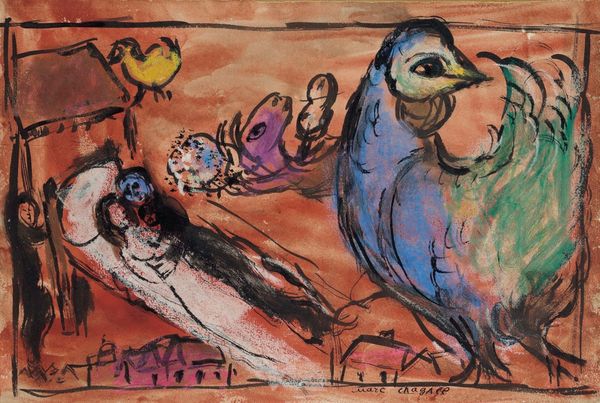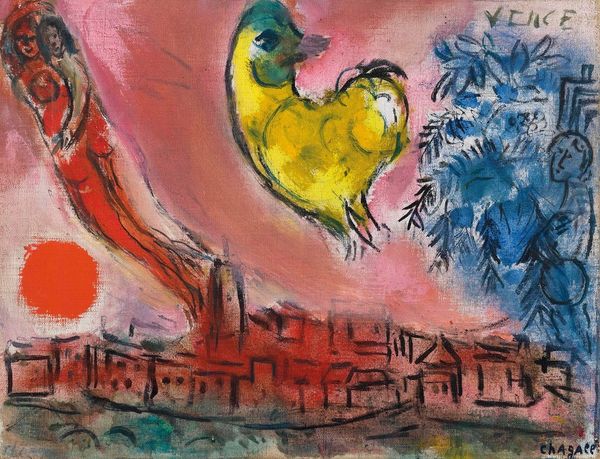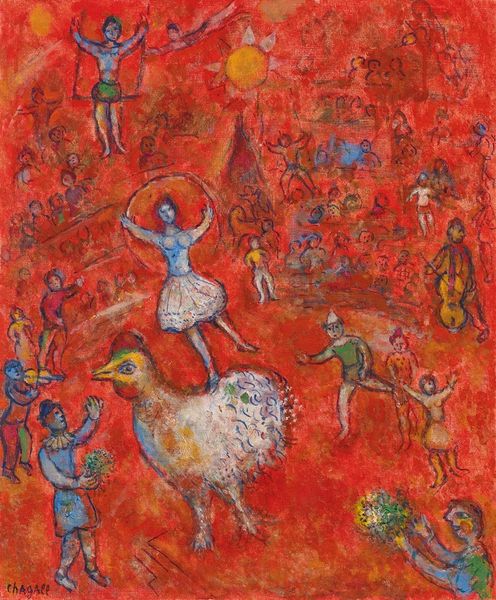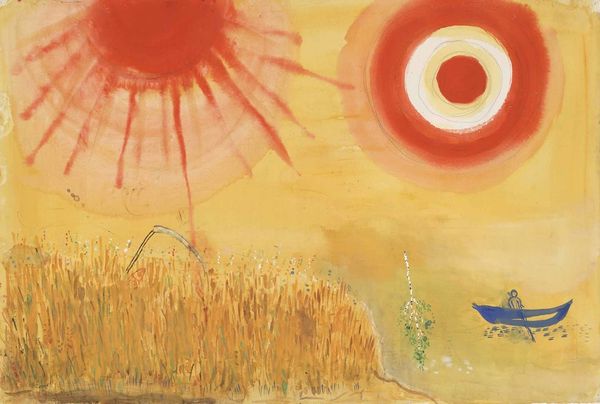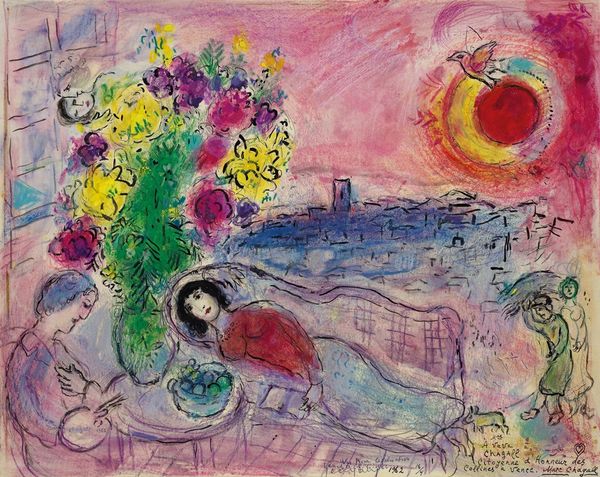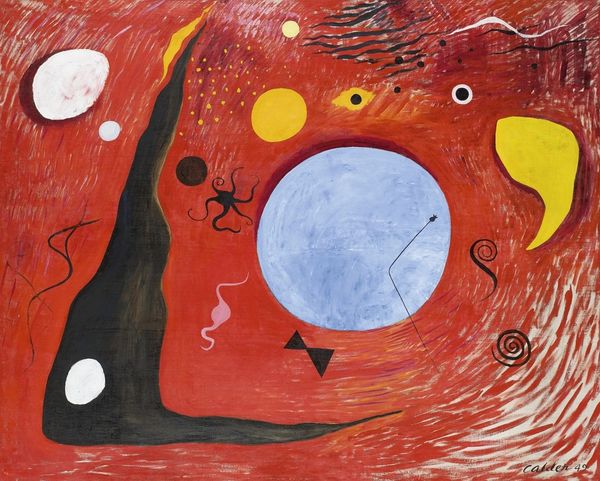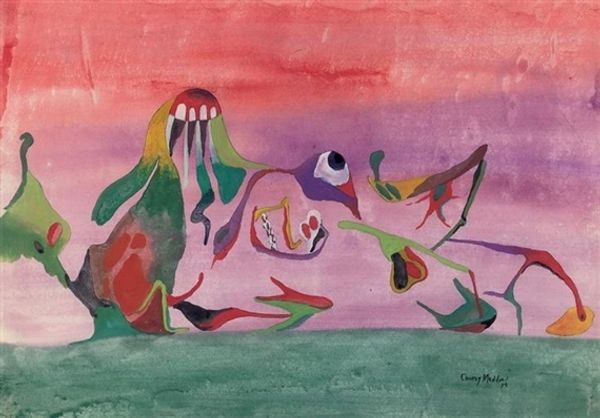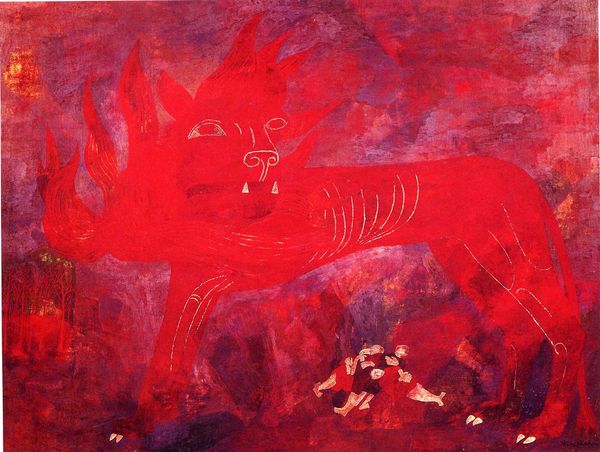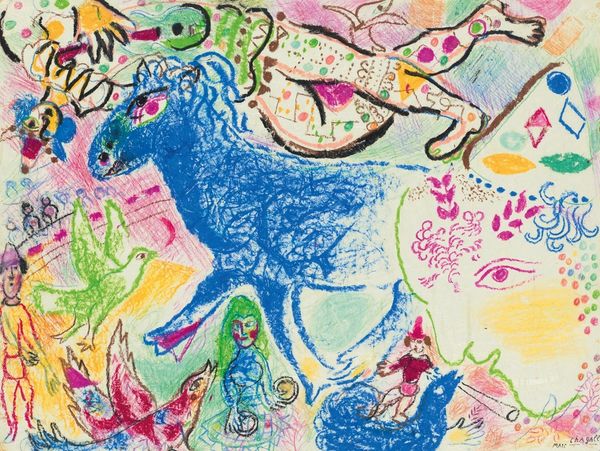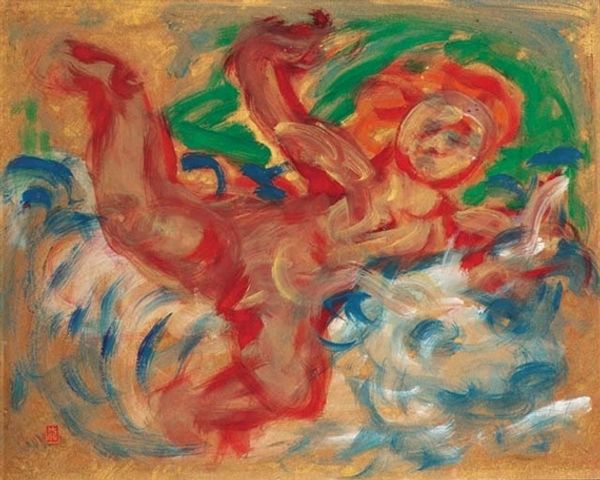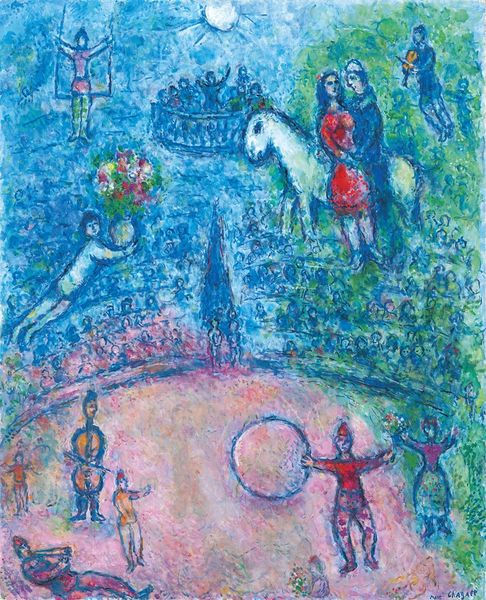
Copyright: Modern Artists: Artvee
Curator: Let's turn our attention to "Coq sur fond rouge entre Paris et Vitebsk," created by Marc Chagall in 1981, an acrylic on canvas. It brings together his memories of France and Russia. Editor: Well, I’m immediately struck by the saturation of color. The overwhelming red seems to bleed across the canvas, unifying—or maybe even consuming—the various pictorial elements. Curator: The color palette certainly dictates the emotional register of the composition. Red, after all, symbolizes passion, love, and also, perhaps, a certain amount of unease. Note the positioning of the Eiffel Tower on the left, a clear Parisian marker, contrasted with the familiar folk imagery he associates with his Russian upbringing. Editor: Exactly! The formal juxtapositions amplify this unease. A massive rooster dominates the foreground. Its size relative to the cityscape is completely distorted, defying any semblance of realistic scale. And what about the nude figure nestled within the rooster’s body? It disrupts the expected anatomy in very striking ways. Curator: That’s precisely Chagall's genius: destabilizing our sense of reality to access a deeper, more universal truth. The rooster is an age-old symbol of virility, of waking, of the life force itself. And to have this cradling pose within its form? The image vibrates with intermingled cultural memories. It becomes a personal allegory, almost a visual poem. Editor: It definitely transcends straightforward representation. The floating figures, too—almost ghostly in their rendering—add another layer of complexity. The artist bends spatial logic. It reminds me a little of automatism, yet the iconography has been very meticulously thought out. Curator: A dreamscape grounded in collective cultural touchstones. Seeing Vitebsk and Paris united, almost superimposed... he distills a personal and historical sense of longing, maybe even a lament. It reminds us of his biography as a migrant, someone perpetually living between worlds, physically and emotionally. Editor: It makes you think about memory itself as a composite layering of fragments rather than a linear, representational process. Curator: Indeed. So much richness is contained in this fairly modest painting. I hope our visitors take away how personal and culturally relevant this is. Editor: For me, it’s a study in how visual language and symbolism can unlock powerful narratives of the self. A fascinating look at both Chagall’s work and ourselves.
Comments
No comments
Be the first to comment and join the conversation on the ultimate creative platform.
